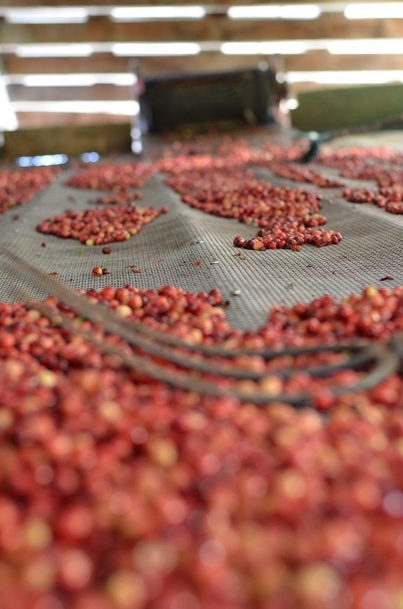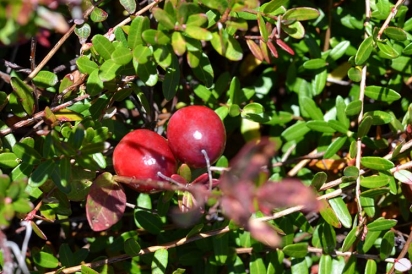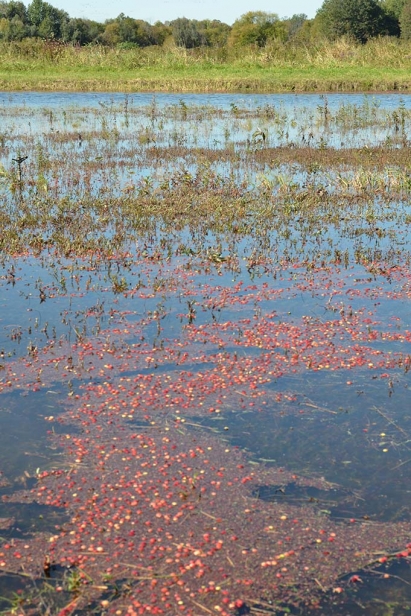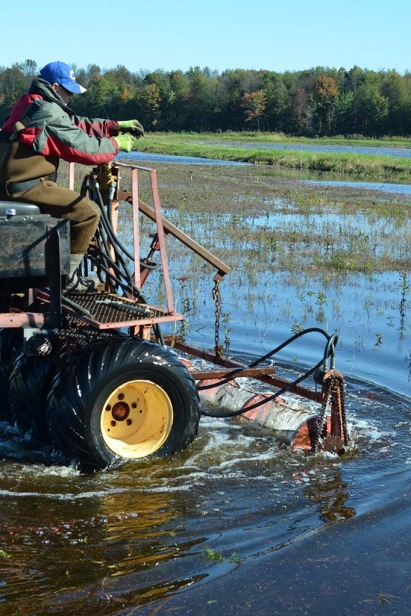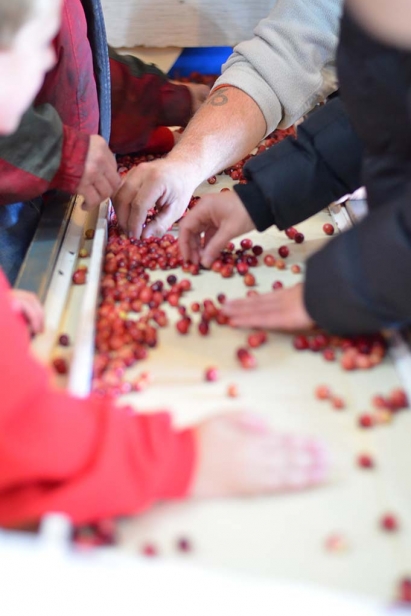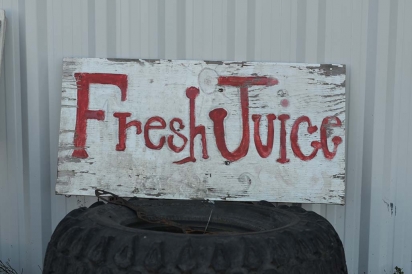From Wilderness to Cranberry Farm
Harvest time is special for Lyle Slater. “Maybe it’s because cranberries are the last crop of the season, but bringing them in gives me a feeling of real accomplishment,” he says.
Every autumn, the owner of Upper Canada Cranberries harvests as many as 17 acres of deep red fruit on his Greely farm, using a machine he made himself to dislodge the berries from the bushes they grow on without damaging them. “Cranberries are like kids,” he grins. “Some leave home early, some have to be kicked out the door.”
The cranberry beds are then flooded (one of several floodings each season) and the floating fruit is loaded into an angled, hopper-style wagon called a gravity box that uses the natural phenomenon to make unloading easier. Slater hooks the wagon to a tractor and drives it to his farm-based fanning mill, which will remove the debris. Next, the berries are washed and sorted by size and colour before going for packaging or processing.
Slater sells his cranberries fresh when they’re in season and processes them year-round, freezing or drying them (fresh and dried are the most popular, he says), squeezing them for juice or converting them into his own jams, sauces and chutneys. His harvest will be smaller this year due to crop failure last winter*, but in a more typical year, he can produce up to 100,000 pounds of the fruit. (*following the harvest, we learned that Slater had lost over 90% of his crop due the extreme cold of last winter and a late spring frost).
As Eastern Ontario’s sole cranberry grower, Slater sells his products at the farm gate and at the Ottawa Farmers’ Markets at Lansdowne Park, Westboro and the ByWard Market. He also supplies a wide range of wholesale customers, including Art-Is-In Bread, Bridgehead, Epicuria, Farm Boy, The Green Door Restaurant, and many others. “I really enjoy delivering to my wholesale customers,” he says. “I have good rapport with them and they treat me very well.”
A wiry, energetic man of 67, Slater does most of the farming and processing himself, along with just a handful of temporary workers he hires at harvest time. He delegates farmers’ market sales to his daughter-in-law.
While there’s no mistaking his dedication to what he does, he got into cranberry farming almost by accident. He was sitting in a doctor’s waiting room one day in 1997, leafing through a magazine, when a story on cranberries caught his eye. The more he read, the more intrigued he became.
The owner of an excavation business at the time, Slater had recently bought 100 acres of land south of Ottawa with the idea of returning to his agricultural roots. He’d grown up on a dairy farm between Mountain and Winchester in North Dundas Township, so the work and routines of farm life were almost second nature to him. Besides, he thought, he could earn enough money farming during the growing season to travel somewhere warmer in winter. The one catch was that he hadn’t figured out what crop to grow. Until he stumbled on the article about cranberries.
As he read, he realized that his land was perfect for cranberry bushes — perennial dwarf shrubs thrive in acidic wetlands such as bogs and marshes. He knew his soil was acidic because he had already checked its pH level, and the property’s abundant peat moss suggested it had once been a bog. What’s more, a creek running through the land would help satisfy the cranberry plant’s high-water needs.
Slater also sensed business potential in cranberries. For one thing, Canada only had a handful of producers and there were just two in Ontario — both in the Muskokas — leaving plenty of room for him to supply the Ottawa region. In addition, he recognized that cranberries, with their high levels of Vitamin C and other antioxidants, would appeal to increasingly health-conscious consumers.
It took Slater six or seven years of hard work to restore the property’s original bog characteristics and prepare it for commercial cranberry production. He had to remove the dense bushes that had grown up over the years and excavate beds for the fruit. Using the vegetation he’d removed, he built dykes to contain the water from the crop’s periodic floodings and to allow workers to travel between them. He also had to construct holding ponds and ditches and install irrigation pipes.
He’s proud of having brought back the cranberry’s native habitat. “These days cranberries are being in 100 percent sand with no nutrients so they require lots of fertilizer and watering with sprinklers. In a peat bog, cranberries have the natural conditions they need to thrive.”
He adds: “I’ve had people tell me that I’m a bit like one of the early settlers, building a farm out of the wilderness.”
Upper Canada Cranberries
2283 Stagecoach Rd., Greely, ON
uc-cranberries.com, 613.798.6232


